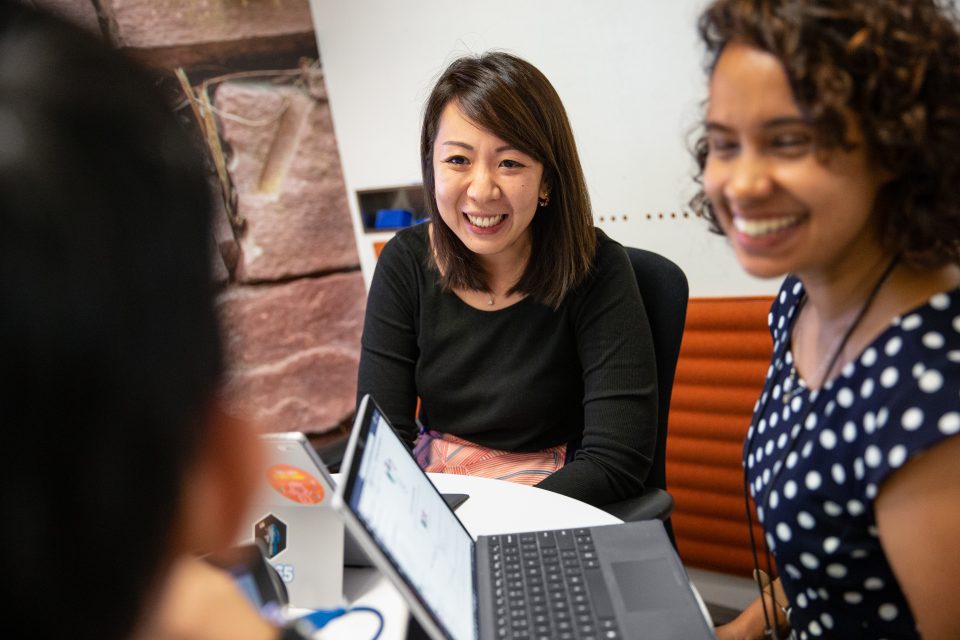 By Vivek Ravindran, Director, Modern Workplace Business, Microsoft Asia Pacific
By Vivek Ravindran, Director, Modern Workplace Business, Microsoft Asia Pacific
As countries recover and adapt to the new normal, how we work, how we live, how we lead and how we think about the future has dramatically changed.
When we think about the future of work, the concept of flexibility and hybrid workplaces has shifted not just our view, but also how business leaders assess their organization’s operations. This behaviour and management change has challenged many, but equally, it has opened opportunities to redefine what truly matters, for colleagues, teams, and companies.
A few months ago, we partnered with People Matters for a conference on the future of hybrid work. Titled People Matters Employee Experience APAC 2021, leaders of industry and human resources explored how to accelerate change with technology, along with Georgina O’Brien, LinkedIn APAC Head of Learning and Engagement; Dr Esther Loo Hong, Head of Organizational Design and Effectiveness for Malaysia Airlines; and Lynn Dang, HR Lead for Microsoft in Singapore. I’ve shared some of the topics we discussed and hope this leads you to initiate a conversation within your organization on the future of work.
Change is the new constant
Adapting to this new hybrid model will require rethinking of long-held assumptions. And that will impact everything from how you shape culture, to how you attract and retain talent, to how you can better foster collaboration and innovation. Based on findings from a study of more than 30,000 people in 31 countries, the first Work Trend Index (WTI) by Microsoft, titled “The Next Great Disruption is Hybrid Work – Are We Ready?” showed that that business leaders should resist the urge to see hybrid work as business as usual.
The overarching global health and economic crisis has caused financial and job disruptions, which have impacted mental health, motivation, and people’s sense of belonging – both within teams and organizations. According to the WTI, 35 percent of workers in Asia experienced decreased interactions with co-workers. As leaders, we need to design processes that will provide our employees with a support system. We agree there isn’t a universal solution, instead each company’s culture should focus on people-centric and data-driven changes to navigate the new normal.
Developing people
To enable our employees’ success in the hybrid work reality, we need to build an environment where people will be able to thrive. Transforming company culture isn’t a set of tick boxes. It takes commitment, and a concerted effort by every person. Like we have at Microsoft, a culture of learning, that helps employees identify their strengths, opportunities, recognises how they have helped others succeed as well as develops their skills is the foundation for success. According to PWC, 40% of workers will require up to six months of reskilling by 2025. Georgina O’Brien shared LinkedIn’s perspective on reskilling and employee retention: “We are focused on making sure our employees and customers have all tools and skills they need to grow externally and internally. LinkedIn Chief Executive Officer, Ryan Rolansky, is calling this period the #greatreshuffle. There is a need to consider different scenarios, such as – what if an Engineer wants to take on a Business Analyst role?” Which is why LinkedIn is looking at outlining soft and hard skills required for every role in the learning paths available on LinkedIn Learning for everyone to choose based on their preference and requirements.
Culture of wellbeing
Using readily available data to create unique learning paths can result in a ‘high-performing healthy routine’ in the hybrid work reality where insights help teams manage their mental health, their productivity and ensure they get to spend time with people that matter the most, their loved ones. With Viva Insights in Microsoft Teams, you create a culture where people and business can thrive with personalized recommendations on optimizing screen and call time, automate the readjustment of schedules, auto-arrange calls and focused work, and even integrate mental health support into work applications, such as Headspace. All to ensure individuals and teams across the organization do their best work.
Technology, data & leadership
Every organizational change needs to be people centric. Empathy is the north star for every successful organization, and this couldn’t be truer in the aviation industry. During the pandemic, Dr Esther Loo shared how Malaysia Airlines demonstrated leadership and a culture of support and teamwork when senior employees decided to cut their own pay to avoid cutting jobs within their teams. In addition, intentional digital programs, helped airline crews expand their skills set so they could continue to contribute to the organization despite limited travel.
Having a growth mindset, being agile and being grounded in the company’s values can create new opportunities and expand horizons, and this is where business leaders and human resources play a crucial role. Peta Latimer, the Chief Executive Officer of Mercer Singapore, explained how the pandemic has elevated the role of human resources, saying “What 2008 crisis brought for CFOs, COVID-19 crisis brought CHROs – during the chaos that was the pandemic, CHROs were the captains needed to navigate their companies in safely in the right direction”.
Seven global hybrid work trends every business leader needs to know
With work no longer bound to traditional notions of time and space when it comes to how, when, and where people work, we have learned from our WTI survey that:
- Flexible work is here to stay
- Leaders are out of touch with employees and need a wake-up call: Research shows that 61 percent of leaders say they are thriving right now – 23 percentage points higher than those without decision making power.
- High productivity is masking an exhausted workforce: Fifty-four percent feel overworked. Thirty-nine percent feel exhausted.
- Gen Z is at risk and will need to be re-energized: Sixty percent of this generation — those between the ages of 18 and 25 — say they are merely surviving or flat-out struggling.
- Shrinking networks are endangering innovation: Aggregate trends across billions of Microsoft Teams meetings and Outlook emails show interactions with our broader networks diminished with the move to remote work
- Authenticity will spur productivity and well-being: Co-workers leaned on each other in new ways to get through the last year. 1 in 6 (17 percent) has cried with a colleague, especially those in healthcare (23%), travel and tourism (21 percent), and education (20 percent).
- Talent is everywhere in a hybrid work world:Nearly half (46 percent) of those surveyed are planning to move to a new location this year, indicating that people no longer need to leave their desk, house or community to expand their career opportunities.
For business leaders, there are five strategies to think about as they plan the shift to hybrid work:
- Create a plan to empower people for extreme flexibility
- Invest in space and technology to bridge the physical and digital worlds
- Combat digital exhaustion from the top
- Prioritize rebuilding social capital and culture
- Rethink employee experience to compete for the best and most diverse talent
Human relationships
Leaders of every segment know that the best way to succeed is to build their teams to have a culture of inclusion, trust, support, and empathy. The teams that thrive are those who are inspired to stay customer centric, and innovation minded – and that’s when a data driven culture with HR creates an employee experience that brings together communications, knowledge, learning, resources, and insights. And HR has an envious role to foster relationships, where people and teams are empowered to be their best from anywhere.





